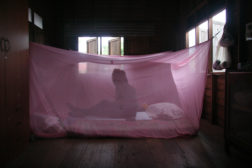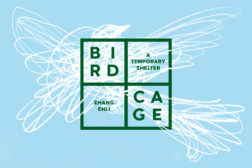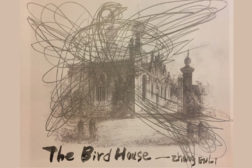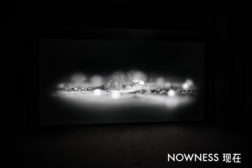

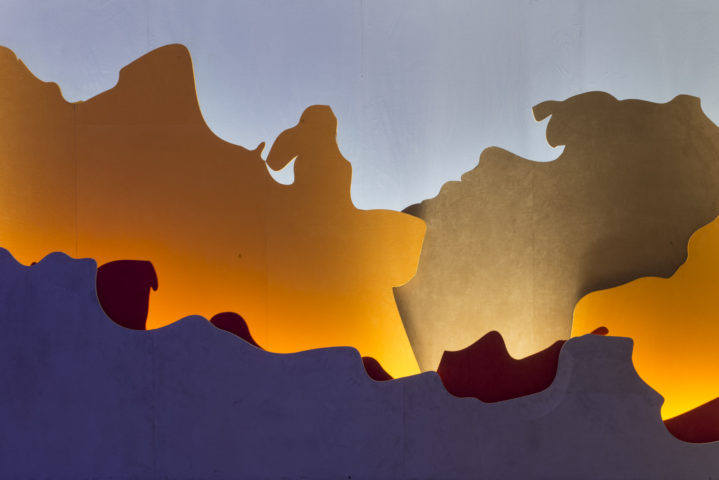


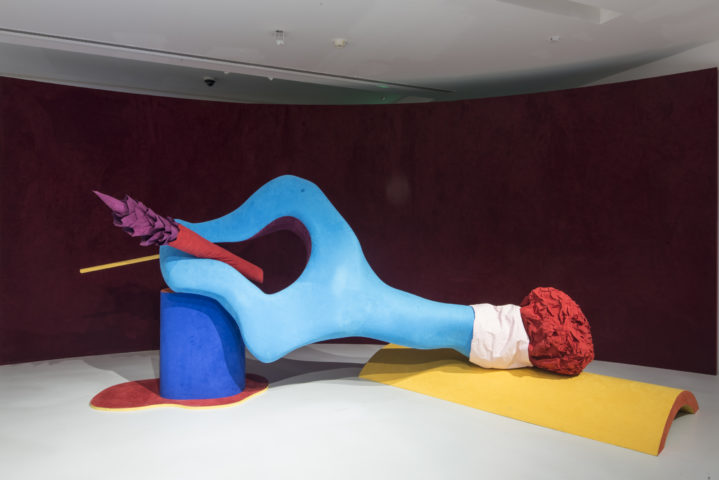




Fantasy Access Code, Shanghai
The intergalactic travel continues from Milan’s Royal Palace to the Chi K11 Museum
The logic of immediate profit and consumption has transformed our ways of experiencing art and beauty. The distinction between business and creativity is less and less necessary or important. It leaves room to unexpected paths of research and discovery, to new roles for players who can contribute to the definition of the cultural grounds of our future. This exhibition is the latest in a series of art projects carried out by Alcantara since 2014 with a forward-thinking vision, with the idea of producing contents rather than sponsoring events. Alcantara engages in fact with artists who are invited to absorb the eponymous material into their creative processes, into their practice, producing brand new works, and with curators, who guide and frame the context in which the artists’ explorations develop and congregate.
After two projects at the Aurora Museum in Shanghai, and the exhibition The King and I, born in the rooms of the Royal Palace in Milan and displayed in a different form in 2016 at the Shanghai Gallery of Art, Fantasy Access Code is the second in a cycle curated by Davide Quadrio and Massimo Torrigiani. After the beginning of its journey, in the occasion of the art and design weeks in Milan in March 2017, the exhibition has now landed in Shanghai’s Chi K11 Museum.
The original Italian title of the exhibition, Codice di avviamento fantastico, refers to the mechanism of the same name as described by writer and novelist Gianni Rodari (1920-1980) in his booklet The Grammar of Fantasy: An Introduction to the Art of Inventing Stories (first published 1973). The author explains how to set up a self-sustaining chain of ideas, associations of marvellous images and views to construct literary texts. In the same way, the exhibition’s itinerary is structured like a constellation of amazing worlds. Each one constitutes a station along the imaginary journey undertaken by each artist, but also a starting point for the visitors’ imagination, invited to enter a parallel universe, casting their gaze beyond the threshold and thus overcoming the boundaries between reality and imagination.
At the start of Fantasy Access Code is an interstellar journey: a big bang, a syncope of times. A spaceship landed in the chi K11 Museum, ushering in a new universe. A five-dimension kaleidoscope, one for each of the artists in the exhibition.
Stepping off Nanda Vigo’s space exploration vessel, her own take on Star Trek’s Enterprise, we walk through Lorenzo Vitturi’s forest, which expands and magnifies the DNA of Alcantara® as seen through a microscope into dolmen-sculptures, both totemic and molecular. Before coming to Georgina Starr’s fourth dimension. Her work is a treaty which, by means of the tools of science fiction, leads us into the most mysterious place of all: our own minds. We then move on to Aki Kondo’s parallel botany: a floral garden, psychedelic and suspended in time. Then everything freezes over, lit by neon lights: the sight seems no longer necessary. In the Soundwalk Collective’s room, listening becomes a different way of seeing. Geography and history slip into one another.
The artworks, which arose from the relationship with the spaces of the Apartment of the Prince of Milan’s Royal Palace, are now deprived of the historical weight of the original venue. It is now an invisible yet tangible presence in the white halls of Chi K11 Museum in the heart of Shanghai. The Italian palace echoes as a distant source of inspiration, allowing the works to take a brand new shape, becoming something else. The rarefied atmosphere of the museum highlights the value and strength of the art pieces, made specifically for this project. And in the end even the Alcantara® disappears, becoming a trigger for our own imagination.
The buildings are alive, like everything else: they think, remember, speak. They are thresholds for the imagination. By association, they draw us into themselves and ever further, just where we never thought we would arrive. Everything is related to something else, reality emerges from imagination, and vice versa.
THE EXHIBITION ITINERARY
The overture to the exhibition is entrusted to Nanda Vigo (Milan, 1936) with CRASH (in the Royal Palace), an intervention which explores the great variety of textures and shades of Alcantara®, accompanied by the light drawings that characterize the artist’s work. Destabilizing us even before entering the heart of the show, the first installation is ‘go’, like the starting square found on all the best board games: a spaceship has crash-landed into the Royal Palace, wedged between the walls of the room, leaving rocks and debris in its wake. The impact has opened up a passageway onto a new world, where we are immersed in the bright and beautiful colours of an alien garden, among lush leaves, tropical palms and a sprinkling fountain of light.
Lorenzo Vitturi (Venice, 1980) has worked on the alteration of proportions, studying various passages from the microscopic to the macroscopic world. Starting from images of the various production phases that give life to Alcantara®, the artist made enlargements of portions of images and turned them into three-dimensional objects, before assembling them into multiform sculptures with bright colours, which together make up a psychedelic jungle, entitled The Garden Inside the Thread.
Georgina Starr’s Moment Memory Monument (Leeds, 1968) brings us back into the sci-fi atmosphere of the start, catapulting us into the very heart of the scenery of the film Je t’aime, Je t’aime, directed by Alain Resnais in 1968, based on a screenplay by Jacques Sternberg. The protagonist of the work is The Sphere, an interactive ‘time machine’, here presented in a video installation of the performance which took place in the course of the exhibition in Milan. Thanks to the film, specifically edited for K11 in Chinese, we are accompanied through the objects and machinery of a science laboratory, one carrying out research into time and memory. We are then invited to let ourselves be transported by an audio narrative which will take us back into our own past.
The theme of nature is the mainstay of Time Limit, the mysterious Eden created by the Japanese artist Aki Kondo (Hokkaido, 1987) in the following room, enveloped by large-scale panels featuring compositions of drawings and brightly coloured paintings, printed on Alcantara®. The artist’s pictorial interventions, made during the display preparations, complete the installation, fostering an original dialogue between her works, both past and present, and the walls of the space.
Resonance, the sound and light installation by the artists and musicians of the Soundwalk Collective (New York – Berlin, 2009), documents the repetitive motion of industrial machinery that is employed in the production of Alcantara®. The collective carried out a series of recordings around the Alcantara® factory in Nera Montoro (province of Terni, Italy), gathering the sounds of machinery and the ambient noises that characterize its working environment. The resulting composition is a musical abstraction deriving from the factory acoustics, in addition to the rhythmical and redundant patterns of twelve mechanical and hydraulic engines in operation. The arrangement of the piece shifts the atmosphere of sound from industrial, to post-industrial, climaxing into a natural soundscape, and circling back to the start, exposing a contemporary discourse over the human and the artificial. An immersive path, traced by sound waves and luminous sources, leads us into the listening area and then out of it again, thus making our own physical presence an integral part of the production process.
THE CURATORS
From 1998 to 2010, Davide Quadrio founded and directed the BizArt Center, the first non-profit artistic-creative workshop in Shanghai, where he lives since 1991. In 2007 he established Arthub Asia, a platform for the production and promotion of contemporary art in and of Asia. To this end, he organised numerous exhibitions, educational and cultural-exchange projects with institutions all over the world. He was the artistic director of Bund18 creative space in Shanghai from 2005-08 and curated the Chinese edition of the Victoria & Albert Museum’s Vivienne Westwood exhibition and the Droog Design itinerant show (in Shanghai, Shenzhen and Beijing). For the Shanghai Biennale, he curated Olivo Barbieri’s solo show in 2006 and coordinated the City Pavilions project in 2012. His most recent projects include, among others, Around Ai Weiwei at Camera – Italian Centre for Photography, Turin; the Zhang Enli and Christopher Doyle exhibition at the Aurora Museum in Shanghai (curated with Shaway Yeh); the Qiu Zhijie exhibition at the Fondazione Querini Stampalia on the occasion of the Venice Biennale 2013; the Yang Fudong retrospective at the 2013 Toronto Film Festival (curated with Noah Cowan); the Jompet solo exhibition at the Fondazione Gervasuti, Venice, on the occasion of the Venice Biennale 2011. Along the years, he has commissioned and produced works with, among others, Surasi Kusolwong, Michael Lin, Liu Jianhua, Christian Marclay, Paola Pivi, Qiu Zhijie, Francesco Vezzoli, Cao Fei, Wu Tsang, Yin Xiuzhen, and Zhang Peili. He is an honorary member of the International Cultural Association of Shanghai, a government agency in charge of cultural exchange, a lecturer at large at Shanghai’s Institute of Visual Arts and he was the curator for contemporary art at the Aurora Museum, Shanghai from 2013 to 2016.
Massimo Torrigiani is the artistic director of the new centre for contemporary art of the Municipality of Bari, and is a member of the curating committee of the Teatro dell’Arte of the Triennale di Milano. From 2013 to 2016, he also sat on the scientific committee of the PAC, the contemporary art exhibition space of the Municipality of Milan, and since 2014 he has been the creative director of Art In The City Shanghai: a festival dedicated to the new creative scene in China. Furthermore, he is also the artistic director of Capo d’Arte, a cycle of exhibitions held at Gagliano del Capo (Lecce), for which he has organised solo shows by authors such as Yang Fudong, the Soundwalk Collective and Shilpa Gupta. Since 2009 he has co-directed the activities of Fantom, a curating and publishing project focusing on photography and sound. Since 2010-12 he directed SH Contemporary, the contemporary art fair of Shanghai. He lives in Milan, where Boiler Corporation is based: the creative agency which he co-founded in 2001 in order to publish the international art magazine Boiler.
THE VENUES
THE APARTMENT OF THE PRINCE
The Apartment of the Prince, comprised of ten rooms in the south-west wing of Palazzo Reale, represents a precious example of royal home from the early 19th century, still virtually intact. Foreseen by the Napoleonic reorganisation of the building in 1805, it was destined for use as the Appartamento di Riserva per Principi (Apartment Reserved for the Princes) in 1830, destined for any princes or archdukes born from Ranieri’s marriage to Elizabeth of Savoy-Carignano. The restauration works, which foresaw the sophisticated redecoration of the rooms – largely in Restauration style, under the guidance of the architect Giacomo Tazzini – came to an end in 1838, shortly after the arrival of the Emperor Ferdinando I, arriving in Milan to be crowned head of the Lombardo-Venetian Kingdom.
PALAZZO REALE (THE ROYAL PALACE)
The Apartment may be reached from the Atrium of the Four Columns and what is now the First Chamber of the Tapestries of the Royal Palace. Housing the city government ever since the late Middle Ages, the palace had been strengthened as a political centre under the dynasties of the Torriani, Visconti and Sforza families. Home to a sumptuous courtly life, in the 17th century it passed under the control of the Austrian Empire. After undergoing neo-classical restauration works headed by Giuseppe Piermarini, it was enriched by the monumental stairway at the entrance, by the new façade onto Piazza Duomo and the modern-day Piazzetta Reale. Previously home to kings and queens, in 1919 it was given over to the State and partially opened to the public, having been embellished by the work of great decorators, sculptors, painters and carpenters. Hit by the bombings of 1943, Palazzo Reale lost most of its treasures. For more than twenty years, reconstruction and restauration works were carried out by the Municipality of Milan and the Superintendency for Archaeological Heritage, before its ultimate reopening as an exhibition venue.
ARTISTS’ BIOGRAPHIES
Aki Kondo
Born in Hokkaido in 1987, she lives in Kanagawa. Solo shows: Daiwa Foundation, London, 2016; ShugoArts Gallery, Tokyo,; Takahashi Collection, Tokyo, 2014; Nagoya City Art Museum, 2013; Mie Prefectural Art Museum, 2013; JIKKA, Tokyo, 2012; ShugoArts Gallery, Tokyo, 2012; Enoma, Sendai, 2010. Recent group shows: Kasugai Civic Cultural Foundation, Nagoya, 2016; Tokyo Opera City Art Gallery, Tokyo, 2015; Kirishima Open-Air Museum, Kagoshima, 2013; Sapporo Art Park, Hokkaido, 2013; Kawaguchiko Museum of Art, Yamanashi, 2013; The Ueno Royal Museum, Tokyo, 2013; Ginza Mitsukoshi, Tokyo, 2013; and Asian Art Museum, San Francisco, 2012.
Soundwalk Collective
A collective of musicians and artists with studios in New York and Berlin, its members Stephan Crasneanski, Simone Merli and Kamran Sadeghi came together to produce concept albums, sound installations and live performances, often in collaboration with artists, musicians and writers, who have recently included Jean-Luc Godard, Nan Goldin and Patti Smith. The Soundwalk Collective’s approach to composition combines anthropology, ethnography, non-linear narratives, psychogeography, the observation of nature and the exploration of recording and synthesis processes. Their compositions always come from specific places and require long periods of travel and fieldwork.
Among other venues, over the years they have performed at the Opéra de Lyon; the CTM Festival (Berlin); the KW Institute of Contemporary Art (Berlin); the Novas Frequencias Festival (Rio De Janeiro); the Strichka Festival (Kiev); Arma 17 (Moscow); the Barbican Centre (London); Berghain (Berlin); the Georges Pompidou Centre (Paris); the Florence Gould Hall (New York); Mobile Art of Zaha Hadid (Hong Kong, Tokyo, New York); MUDAM (Luxembourg); MuCEM (Marseilles); the Madre Museum (Naples); the National Museum of Singapore; the New Museum (New York); TAP (Poitiers) and Villa de Noailles – Centre d’Art et de Culture Contemporain (Hyères). They have held solo shows at the Rubin Museum of Art in New York, the District Six Museum in Cape Town, ‘Capo d’Arte’ in Gagliano del Capo (Lecce) and in Times Square, where in 2016 they displayed Jungle-ized, a major interactive audio-visual installation. Killer Road, their homage to the singer and musician Nico, produced in collaboration with Patti Smith and released recently, has so far been taken to Abu Dhabi, Berlin, London and New York.
Georgina Starr
Born in 1968 in Leeds (UK), she trained at the Slade School of Art in London and the Rijksakademie van Beelende Kunst in Amsterdam. She lives and works in London, where she began her career in the early 1990s, joining the group of the Young British Artists. Since then, her video, sound, installation and performance works have been displayed frequently around the world, including her recent solo shows at the Pinksummer Gallery (Rome, 2016) and the Middlesbrough Institute of Modern Art (UK, 2015), as well as group shows at the Cooper Gallery (Dundee), the Vernon Street Gallery (Leeds), Pivô (São Paulo), Chateau Shatto (Los Angeles) in 2016; the Kemper Art Museum (St. Louis, United States), the Museum of Liverpool (UK), the De La Warr Pavilion (Bexhill-on-Sea, UK), the MUMA (Melbourne) and the Drawing Room (London) in 2015. From May to September 2017, the FRAC Franche-Comté is featuring a major retrospective of the 25 years of her artistic career, entitled Hello. Come Here. I Want You.
Nanda Vigo
Born in Milan in 1936, she lives and works between Milan and Eastern Africa. After graduating from the Institut Polytechnique in Lausanne and training in San Francisco, in 1959 she opened her own studio in Milan. From then on, the key theme of her art has been the conflict/harmony between light and space. In 1959 she began to frequent the studio of Lucio Fontana, before drawing closer to the artists who had founded the Azimut Gallery in Milan: Piero Manzoni and Enrico Castellani. In that period, among her various journeys around exhibitions right across Europe, she got to know the artists and places of the ZERO movement in France, Germany, Holland. In 1959 she began designing the ZERO House in Milan, which was then completed in 1962. Between 1964 and 1966, she took part in many ZERO exhibitions throughout Europe. In 1965 she curated the legendary exhibition ZERO Avantgarde in Fontana’s studio in Milan. Between 1965 and 1968, she collaborated with Gio Ponti and created the Casa sotto la foglia, in Malo (province of Vicenza). In 1971 she was granted the New York Award for Industrial Design for the development of her lampshades (‘Lampada Golden Gate’), and that same year, she implemented one of her most spectacular projects for the Casa-Museo Remo Brindisi at Lido di Spina (province of Ferrara). In 1976 she won the First St. Gobain Prize for glass design. In 1982 she took part in the 40th Venice Biennale. In 1997 she curated the display of the exhibition Piero Manzoni – Milano et Mitologia at Palazzo Reale in Milan. Her works are to be found in the permanent collection of the Design Museum of the Triennale. Her activity is characterized by a constantly interdisciplinary relationship between art, design, architecture and the environment, and she carries out projects as an architect, designer and artist. Since 2013, some of her works have been present in the collection of the Ministry of Foreign Affairs. In 2014-15 she exhibited at the Guggenheim Museum in New York, at the Martin-Gropius-Bau in Berlin and at the Stedelijk Museum in Amsterdam as part of the retrospectives dedicated to ZERO. Between 2015 and the start of 2016, she staged various solo shows: Affinità elette at the Centro San Fedele in Milan, followed by that at the Fondazione Lercaro in Bologna, Zero in the Mirror at the Galerie Volker Diehl in Berlin, and at the MAC in Lissone, as well as the one at the Sperone Westwater Gallery in New York. She took part in the XXI Triennale International Exhibition in Milan (21st Century. Design After Design), and in 2016 she presented her first monumental work, Exoteric Gate, displayed in the courtyard of Ca’ Granda at the University of Milan.
Lorenzo Vitturi
Born in Venice in 1980, he is an Italian photographer and sculptor who lives in London. Previously a painter of film sets, Vitturi has transposed this experience into his own photographic research, based on site-specific interventions on the edge between photography, sculpture and performance. In Vitturi’s work, photography is conceived as a space of transformation, where the various disciplines come together in the representation of an ever more complex urban reality. Vitturi has recently exhibited at the Photographers’ Gallery in London, the Yossi Milo Gallery in New York, the Contact Gallery in Toronto and the CNA in Luxembourg. The artist has also taken part in various group exhibitions at the MAXXI in Rome, the Georges Pompidou Centre in Paris, the Triennale di Milano and the Shanghai Art Museum. Following the group show Picture Perfect (Viasaterna, Milan), in 2016 he held his first solo show in Italy, Droste Effect Debris and Other Problems, curated by Fantom.
All photos are taken by Daniele Mattioli and all courtesy to Alcantara.
